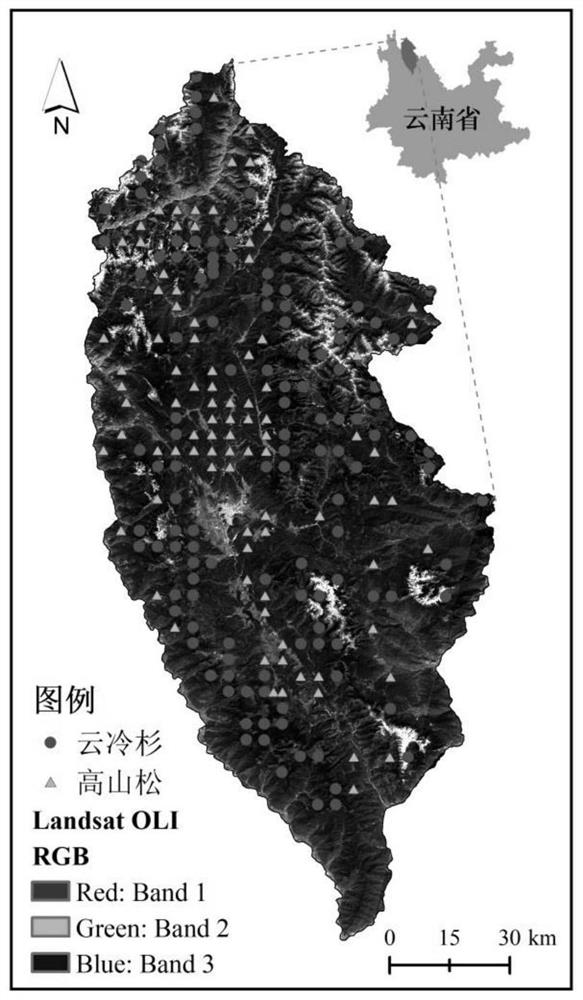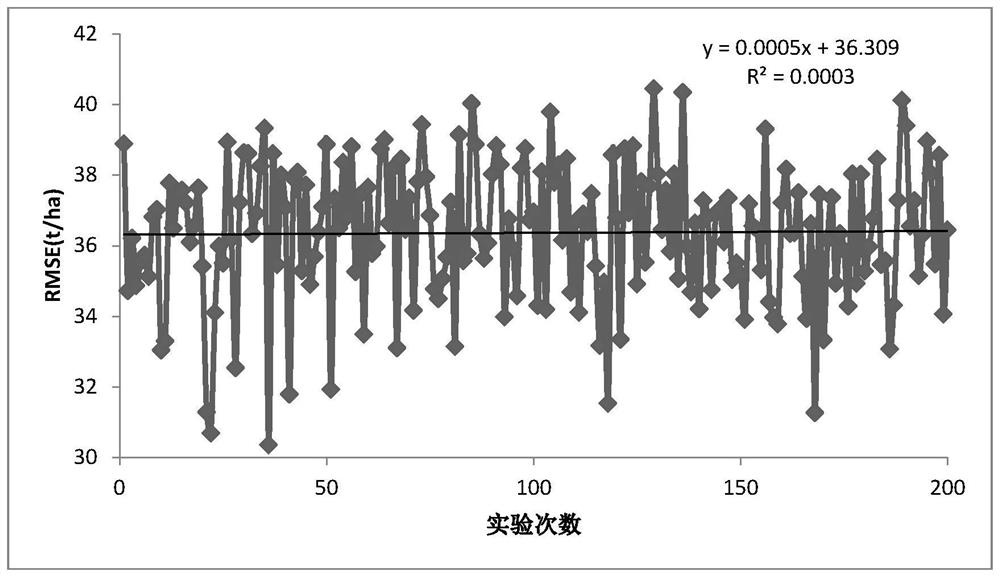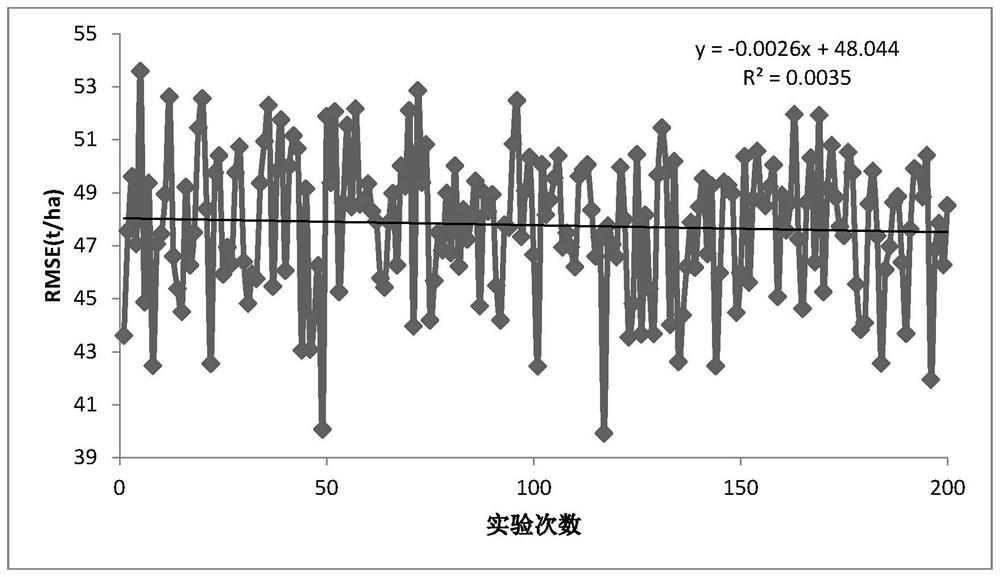Method for determining reasonable sample number in forest aboveground biomass remote sensing estimation
A biomass and sample number technology, applied in complex mathematical operations, instruments, character and pattern recognition, etc., can solve problems such as difficulty in determining the number of samples, large manpower and material resources, and modeling accuracy that cannot meet the needs
- Summary
- Abstract
- Description
- Claims
- Application Information
AI Technical Summary
Problems solved by technology
Method used
Image
Examples
Embodiment Construction
[0043] The technical solutions in the embodiments of the present invention are clearly and completely described below in conjunction with the accompanying drawings in the embodiments of the present invention. Apparently, the described examples are only part of the embodiments of the present invention, not all of them. Based on the embodiments of the present invention, all other embodiments obtained by persons of ordinary skill in the art without creative efforts fall within the protection scope of the present invention.
[0044] A method for determining a reasonable number of samples in forest aboveground biomass remote sensing estimation, comprising the following steps:
[0045] 1) Overview of the study area
[0046] Shangri-La City in the study area, formerly known as Zhongdian County, is called "Jiantang" in Tibetan. It belongs to the Diqing Tibetan Autonomous Prefecture of Yunnan Province. It is located in the northwest of Yunnan Province and the hinterland of the Hengduan...
PUM
 Login to View More
Login to View More Abstract
Description
Claims
Application Information
 Login to View More
Login to View More - R&D
- Intellectual Property
- Life Sciences
- Materials
- Tech Scout
- Unparalleled Data Quality
- Higher Quality Content
- 60% Fewer Hallucinations
Browse by: Latest US Patents, China's latest patents, Technical Efficacy Thesaurus, Application Domain, Technology Topic, Popular Technical Reports.
© 2025 PatSnap. All rights reserved.Legal|Privacy policy|Modern Slavery Act Transparency Statement|Sitemap|About US| Contact US: help@patsnap.com



